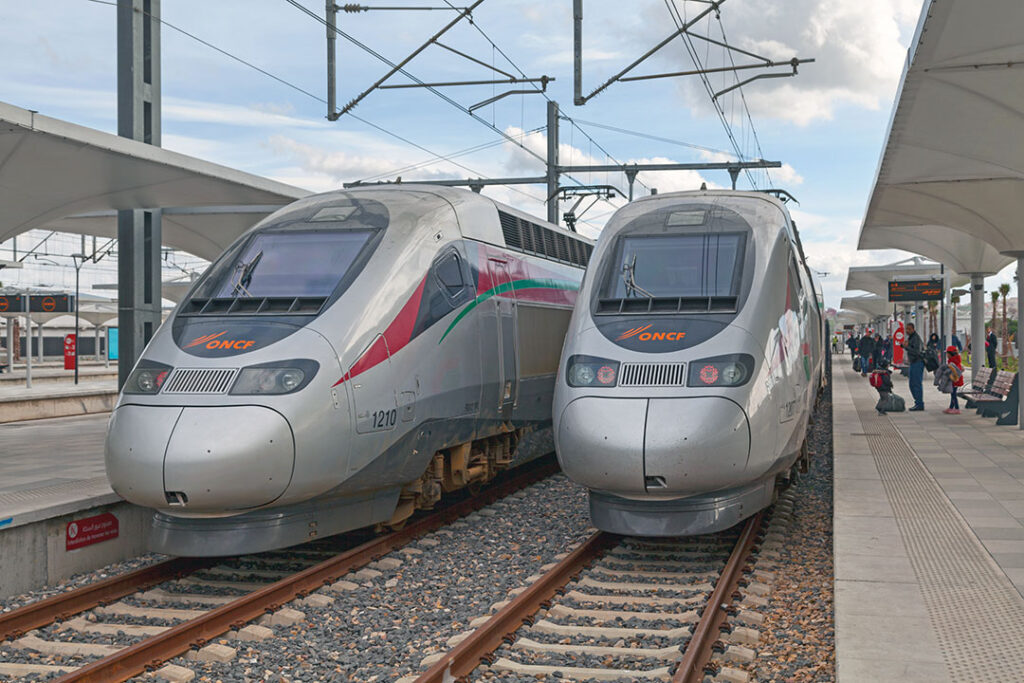ADF STAFF
Governments are developing modern high-speed railway infrastructure to replace outdated diesel-powered locomotives with electric trains.
Trains arrived in Africa in the 1850s, with the first railway built in Egypt. Over the years, railways sprouted up across the continent, but mostly for industry, not passengers.
Now, with interregional trade becoming more common, railways are seen as a way to move people and goods at a large scale. These are some of the new railway developments on the continent:
Al Boraq, Morocco: Morocco debuted its first high-speed train in November 2018. The continent’s first bullet train has a top speed of 320 kph. Morocco says it has reduced travel time from Casablanca to Tangier to 50 minutes from slightly over three hours, with 3 million passengers as of 2022.
Suez Canal on rails, Egypt: Egypt signed a $4.45 billion deal with transportation company Siemens Mobility in September 2021 to build an electric rail line with a top speed of 250 kph. The train will travel on an 1,800-kilometer rail line linking the Red Sea and the Mediterranean starting in 2023. The full project will take 15 years.
Regional Express Train, Senegal: Senegal launched the final phase of its $1.3 billion project in late December 2021 to limit traffic jams in Dakar. Construction began in December 2016. The final phase is expected to be completed in early 2024, according to Railway-Technology.com.
Bullet train, Tanzania: Tanzania is introducing 160 kph trains that will be the fastest in East Africa by 2024. South Korea’s Hyundai Rotem is developing a 546-kilometer, high-speed electric line. In March 2021, Tanzania started testing the electrical systems for the new standard-gauge railway.
Gautrain, South Africa: The Gautrain is South Africa’s fastest train, with a maximum speed of 160 kph. It began service in June 2012 on an 80-kilometer commuter rail system linking Johannesburg, Pretoria, Ekurhuleni and Tambo International Airport.

